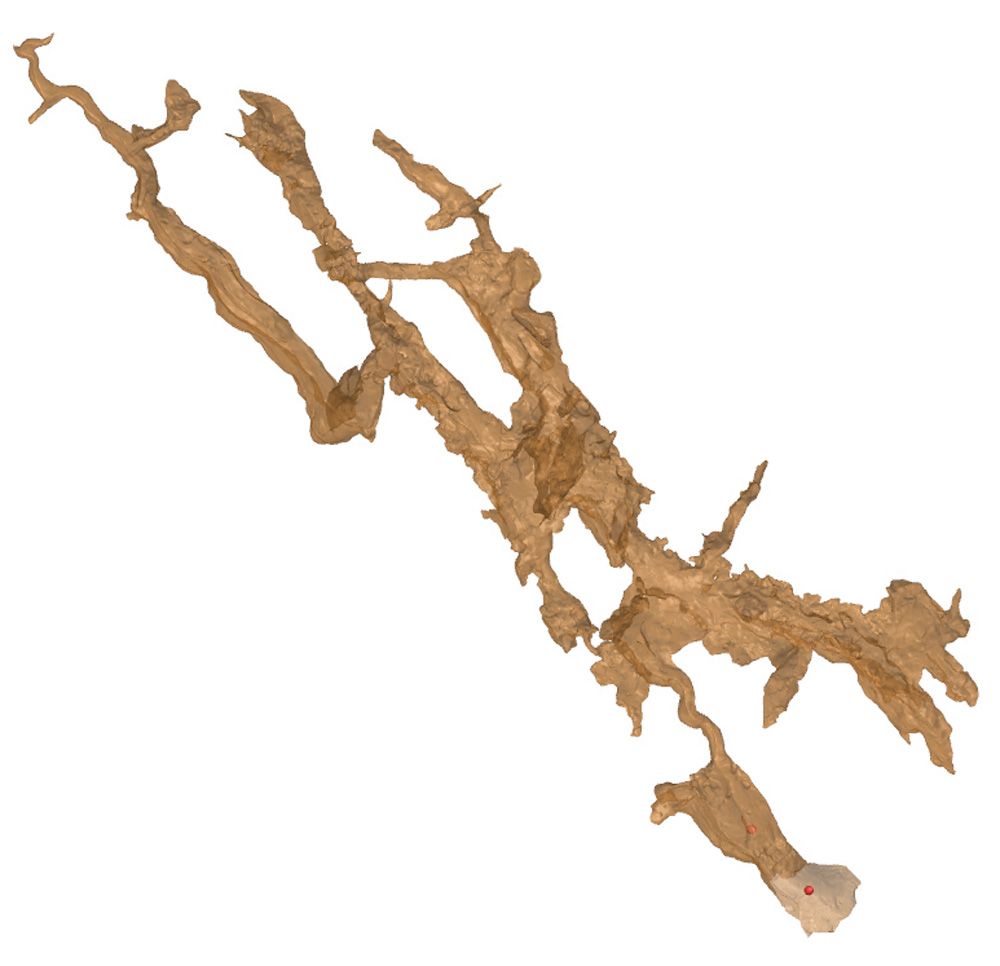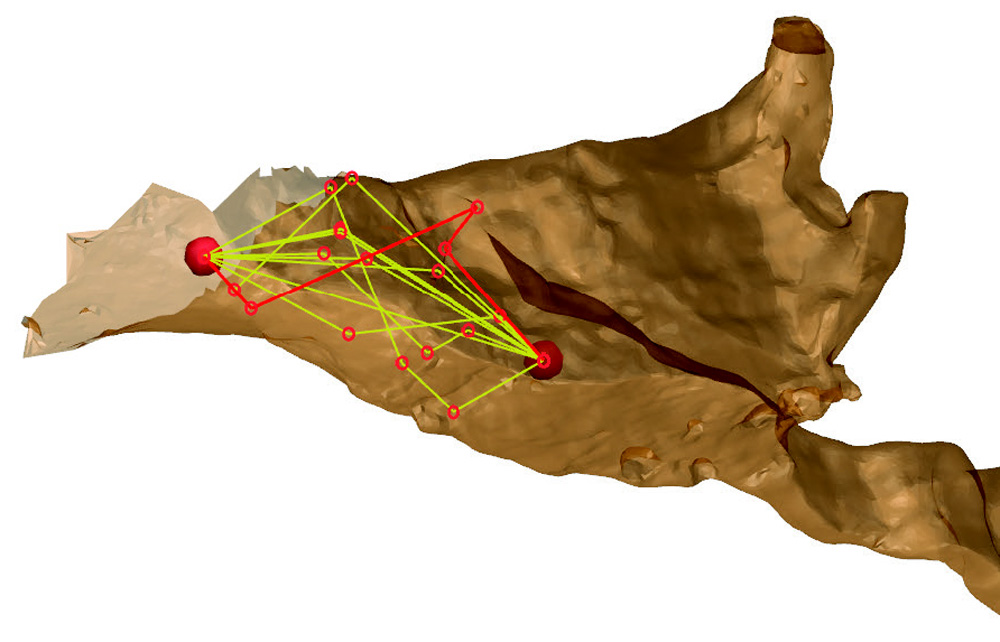Explore the Possibilities
Building a digital twin of paleolithic decorated caves
Using Simulation to Understand Paleolithc Peoples’ Response to Cave Art Acoustics
20,000 years ago, the paleolithic inhabitants of what is now known as the Dordogne region of southwestern France began painting on the walls of a cave in which they lived. The Lascaux cave paintings, over 600 images of large animals and fauna are the most famous in the world, but little is known about the paelothic people that created them, or how they used the cave space. To unlock this ancient mystery, researchers have turned to Simcenter.
Doctoral student and researcher Armance Jouteau at the University of Bordeaux, PACEA Ministry of Culture Laboratory, is studying the use and organization of art in paleolithic decorated caves at Lascaux and Cussac. She is taking a different approach by using acoustic data with software simulations to better understand how paleolithic people understood their subterranean environment.
Even though archaeologists have some measurements of acoustics in caves, the conclusions about paleolithic peoples’ responses to sounds traditionally have been based mainly on the perceptions or ideas of the researchers. Armance wanted to contribute information to the field so that she and her fellow researchers could be assured that observations and conclusions are not based solely on their feelings. She wanted to produce objective data that can be shared across and inform research projects in the future.

3D model of the cave in Simcenter 3D. Geometry courtesy of Laboratory Cave of Leye.
Determining the Connections between Space, Light, and Sound Her research focused on data of how people might have localized themselves as the sound moved within the cave. Sound would have been the primary way of mapping out their position inside the cave. Light sources were limited in coverage and duration compared to the lights we use today. Armance also wanted to see if they could identify a connection between the location of the major structural pieces and artworks in the caves to the places where the sound is better. Researchers had in the past proposed a direct link between these two things but it had yet to be proven.
They first recreated the cave structure digitally, as it would have been several thousand years ago. For Cussac, it was easier because the cave has not been altered much. In Lascaux, however, many modifications have been done since it was rediscovered, especially above ground. As part of the efforts to recreate the paleolithic ground, another research project is working on deducing the original morphology of the Lascaux cave before it was discovered, as well as during paleolithic times.
The conservation efforts of the Lascaux cave that limit entrance make it impossible to do standard test and measurement. Standard equipment would be disruptive to the cave so the only way to do this kind of research is through simulation, through building a digital twin of the cave.
To measure the cave’s shape today to approximate the way it was thousands of years ago, they first replicated the morphology just before the discovery in 1940, based on data from the archives, photographs, people testimonies, reports, books, and archaeological studies.
Starting from this morphology of the discovery, they then wanted to be able to interpret the paleolithic times based on mainly geological, morphological, and archaeological data rather than assumptions or feelings.
The goal of Armance’s thesis is to use modern simulation tools to better understand the way people from these periods were living, how and perhaps why they painted things in relation to the way they were locating in the dark. It is probable that acoustics were just as important as light underground.
They used Simcenter to conduct ray acoustic modeling, approximating sound as a beam instead of a wave. Inside the model, they placed a virtual microphone and headphones in key places from an archeological point of view. Then, they ran the sound simulation and analyzed the data, which can be in the form of an acoustic response or sound pressure changes. Nicole, at the Centre Scientifique et Technique du Batiment (CSTB; Scientific and Technical Center for Building), who works with software to simulate sounds and lighting in buildings, helped the researchers to build the model for use in Simcenter’s digital twin.
“With Simcenter, we are able to simulate the acoustic behavior of the Lascaux cave in its Paleolithic shape in very fast simulation times. This allows us to study whether primitive men may have used echolocation to move inside,” says Armance.
Simcenter tools are enabling the building of digital twins that merge data from the virtual and real world, blurring the boundaries between engineering and process domains, even as Armance is crossing the domains between archaeology and building technologies.
Simcenter is built to deliver multi-discipline simulation inside a centralized engineering desktop, and Simcenter’s simulation solvers help predict real-world performance for various physics domains. Simcenter 3D’s new ray acoustics solution treats high frequency sound behavior as if it were a ray of light. It simulates sound propagation by tracing beams of sound shooting from a monopole source and reflecting when striking surfaces. Simcenter is ideal for simulation of the paleolithic caves because it is designed to simulate very large geometries and higher frequencies.

Simulated impulse response between two humans in the cave.
Armance and her team validated the simulation results by collecting data from the Cussac cave and the Leye cave in Dordogne, France, which they used as a standard “laboratory” cave because it has no archeological equipment. They could then compare the direct-measurement results to validate the simulated results.
Although they had 3D models of the physical cave structures for Lascaux and Cussac, they had no information on the way the sound was modified by the walls. Data on how different materials would return sound was not readily available, such as the variations of types of stone and clay in the caves. So they had to take measurements in the real caves by sending sound and collecting the data on how the sound was modified by the particular wall materials and by the shape of the caves.
The fed the many different measurements they collected to the model, then ran simulations and compared the results to the measurements they took in the cave. They can then apply the same method with other paleolithic caves, which are much more difficult to gain access, once they validated the data for simulations with direct measurements.
Armance says, “Based on this paleolithic morphology, we wanted to create simulations and try to recreate the acoustic response in the Lascaux cave at the paleolithic time. I was particularly interested in using simulation to recreate and try to understand this paleolithic response. Thanks to the simulation, we are able to understand, to hear, what was the acoustic response heard by paleolithic people.”

Ray paths capturing the sound propagation between a human at the entrance of the cave and another one a few meters inside.
